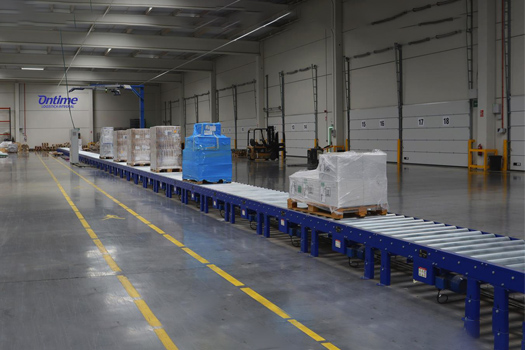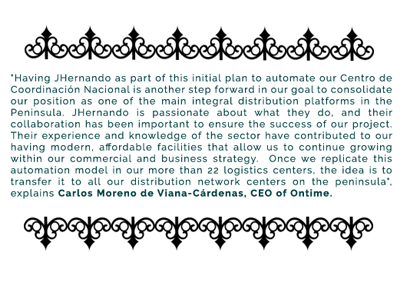Automating processes for efficiency gains

For companies in which the flow of package movement in their warehouses or distribution centres is a constant task and is commonplace, it is always interesting for them to consider the multiple advantages of automating some of their transport and logistics processes. And although it can sometimes be difficult to decide on which tasks in the supply chain to start applying industrial automation, if you have specialised engineering companies at your side like JHernando, who can advise and guide you through the process, it will save you many difficulties and can be a significant improvement when it comes to synthesising and shaping your project.
There are many options that can be automated in a plant and they can be carried out in phases. From order preparation (picking) to loading and unloading, the internal transport of packages or pallets of different types and sizes, or the integration of sorting systems that optimise operations and speed up processes. At JHernando we have experience in the implementation of this type of automation for leading companies worldwide in the ecommerce sector, both in parcel and courier services and as Logistics Operators.
In recent months, at JHernando we have carried out the automation of its Centro de Coordinación Nacional, located in Madrid, for Ontime, one of the main Integral Logistics Operators on the Iberian Peninsula.
Ontime is the operator with the largest portfolio of customised services in the market, covering the entire logistics process, from transport and storage to document management and digital messaging. Due to its activity and its new lines of business opened in recent years, including Ecommerce Capillary Distribution and XL Transport of bulky goods, it was essential for them the regular movement of large pallets, so they have counted on us to automate this new headquarters in Madrid and gain in efficiency.
The integration carried out by JHernando for Ontime of this technology means an improvement for the Operator with a performance of more than 30% in the whole process. The automation of the conveyors is based on infrared technology with multidirectional scanners, which capture the barcodes of the goods. Meanwhile, the dynamic weighing and volumetric system captures the weight and volume in movement, proceeding to its classification and subsequent invoicing. With a reading capacity of 240 pallets/hour, this will be an important step for Ontime to achieve the medium and long-term objectives set out in its business strategy.
 The next challenge will be to replicate this automation model in the more than 22 logistics centres that Ontime has in Spain and Portugal. In this sense, working side by side with a specialist company like ours, focused on flexibility and able to adapt to its specific needs, will allow Ontime to tackle this large-scale project with greater confidence.
The next challenge will be to replicate this automation model in the more than 22 logistics centres that Ontime has in Spain and Portugal. In this sense, working side by side with a specialist company like ours, focused on flexibility and able to adapt to its specific needs, will allow Ontime to tackle this large-scale project with greater confidence.
One of the main advantages of automating transport when dealing with pallets or heavy goods is that the problems associated with fatigue or injuries that can occur when handling such heavy products are minimised among operators. In this way, in addition to maximising productivity ratios through speed and precision, automatic palletising offers a bonus in terms of improved working conditions and health and safety for employees.





